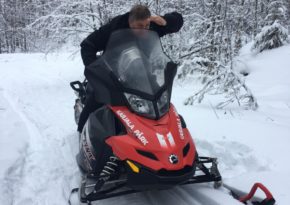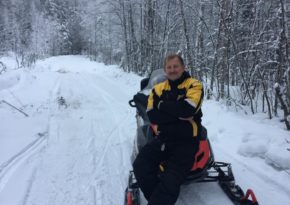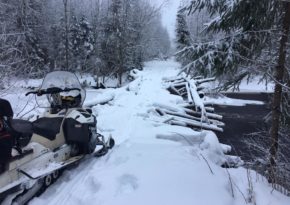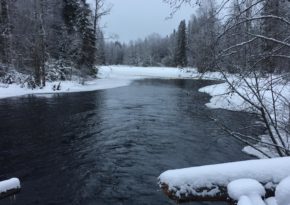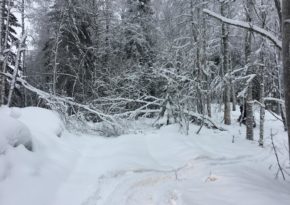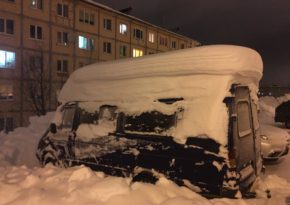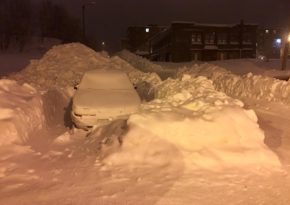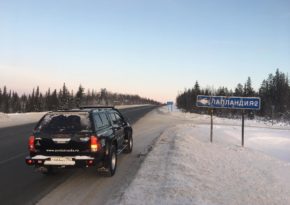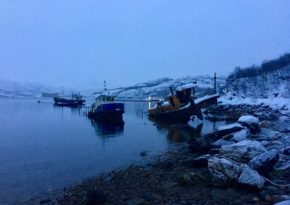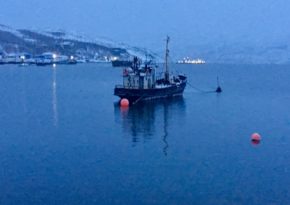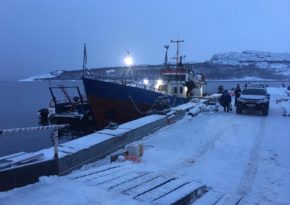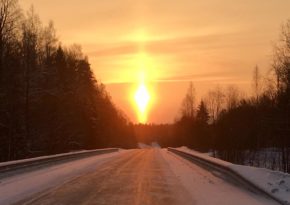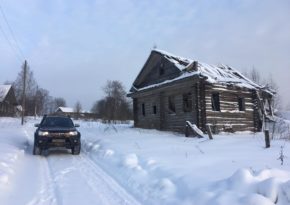A trip across the north of Russia
There is one sea on the Earth that I have kept visiting every year for the last 16 years. Do you think it's the Black sea or the Red one? Or maybe the Mediterranean? No, you didn't guess! Near this sea there are no palm trees and snow-white beaches, there are no colourful fish and bright corals, there are no luxury hotels and only few tourists.

But there are harsh cliffs with a leaden sky hanging over them and a stormy, not that warm sea.
"Then why go there?", you may reasonably ask me. And I don't really know how to answer this question. To understand why people who have been there once come back again and again, you just have to make up your mind to take a ticket to Murmansk, then travel another 150 kilometers by car to the deserted Liinahamari submarine base. Then you would put on a dry suit, take an aqualung on your back and step into the black abyss of the Barents Sea from the board of an iron ship. And there, deep among the grey rocks, huge boulders and kelp thickets you may find the answer to your question.
Although... if you still doubt, you had better take a ticket to Sharm El-Sheikh. It was promised to be open soon. :)
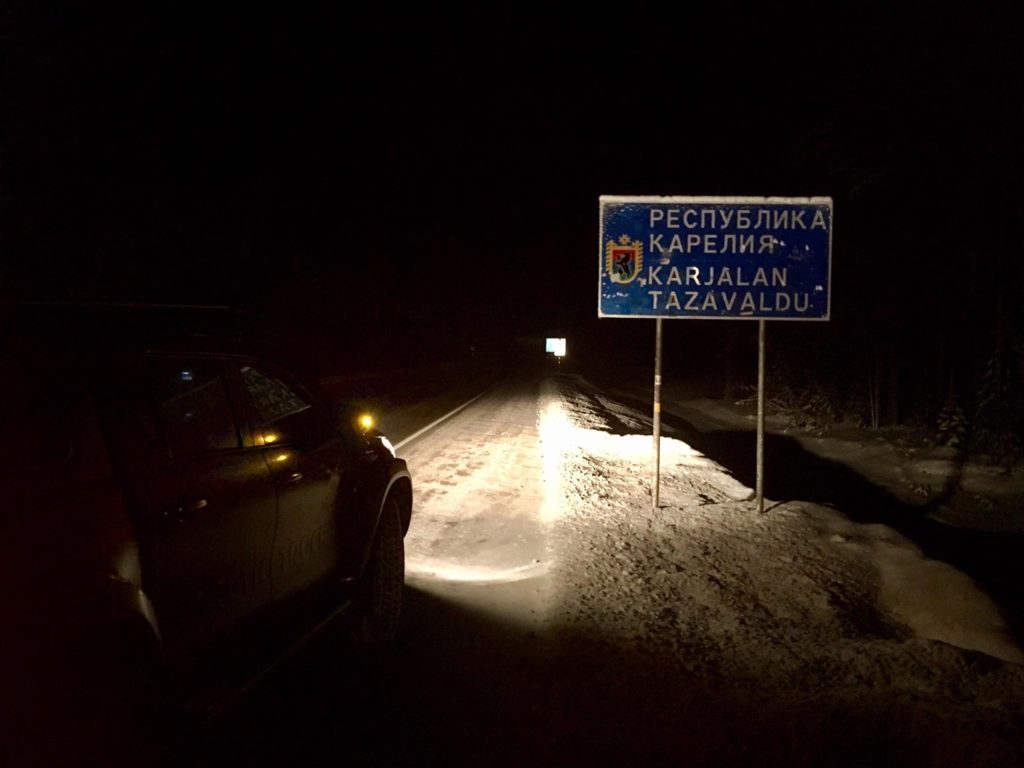
Anyone who has been to the Barents Sea knows that the weather there is very changeable and difficult to predict. And this time we were informed that from the 15th to the 17th of January there would be a storm, which meant that the exit from Liinahamari Bay would be closed.
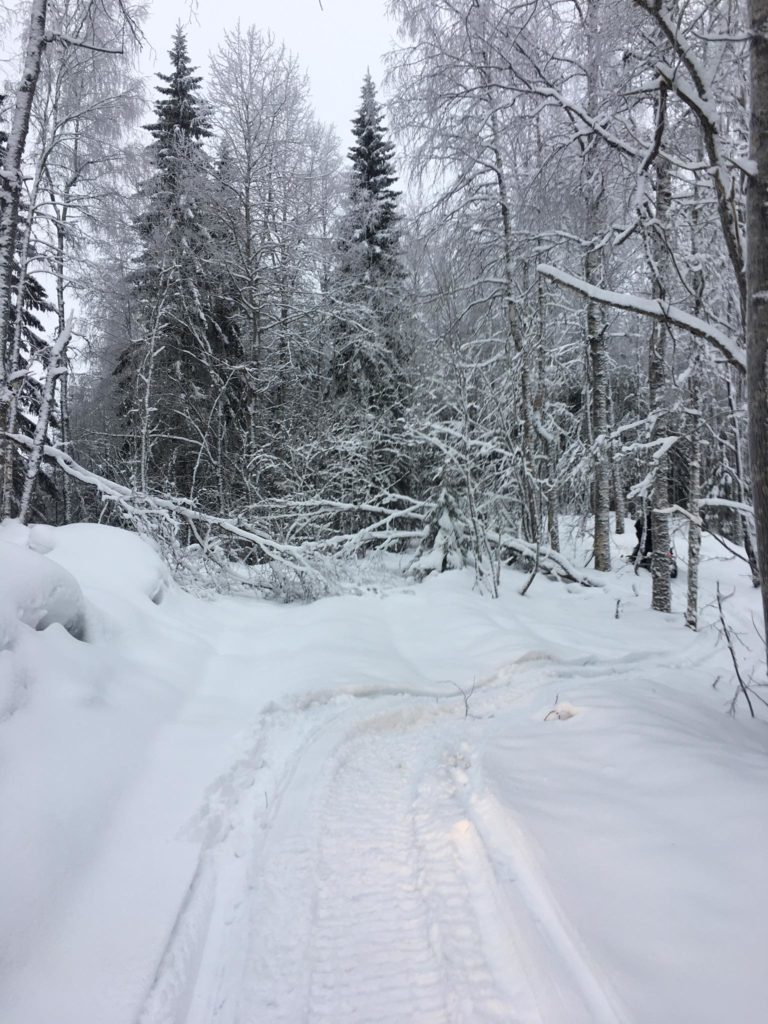
To indulge in vain hopes for the good weather on the seaside, especially in January, is not that fun. So we decided to take our time and stay in Karelia for another day, in a wonderful eco hotel named Karjala Park, which is located on the banks of the Shuya River near Petrozavodsk. We were provided with a cozy wooden house in a snow-covered pine forest, went on an exciting snowmobile ride across incredibly beautiful locations, had a wonderful dinner in the tent, listening to the crackling of birch firewood and the whining of husky sled dogs. Could we reject such a proposal?!
And the next day our plans have been changed again. It has turned out that we still have some time to make a stop in the Khibiny, while the sea is stormy. (This is a small ski resort on the Kola Peninsula). And maybe we will even have a chance to test the local routes!
Khibiny is a mountain range, which is located in the south-east part of the Kola Peninsula. Back in the early 20th century, there was practically no civilization, but only herds of deer, which were moved from place to place by semi-nomadic Sami tribes (that's how the aborigines were called). In the late 1920s the essential fossils: iron, copper, nickel, cobalt, apatite – were discovered in the peninsula. There began the development of semi-desert northern territories and a railway was laid. By the forces of prisoners of the Solovetsky strict-security camps and dispossessed peasants, brought here from all over the country, mining and processing plants and factories were built, around which single-industry towns started growing (for example, Kirovsk, Apatity, Monchegorsk, Olenegorsk).
The further we traveled north, the shorter the day became, the colder the weather was and the more snow fell. The E-105 highway (Kola) is in very good condition: there are huge snowdrifts on the roadsides, but the asphalt is clean and since nobody pours any shit on the road here, all cars shine brightly.
When we got to Kirovsk late in the evening, the first thing we did was to wash our Toyota from the sticky mud of Moscow roads.
Kirovsk is a small town with a population of 26 thousand people, which is situated in the southern part of the Khibiny on the shore of a lake with an unusual name Bolshoy Voudyavr. I visited this area three years ago, when I was returning home from a motorbike trip to the Rybachy peninsula, and that time Kirovsk did not impress me much.
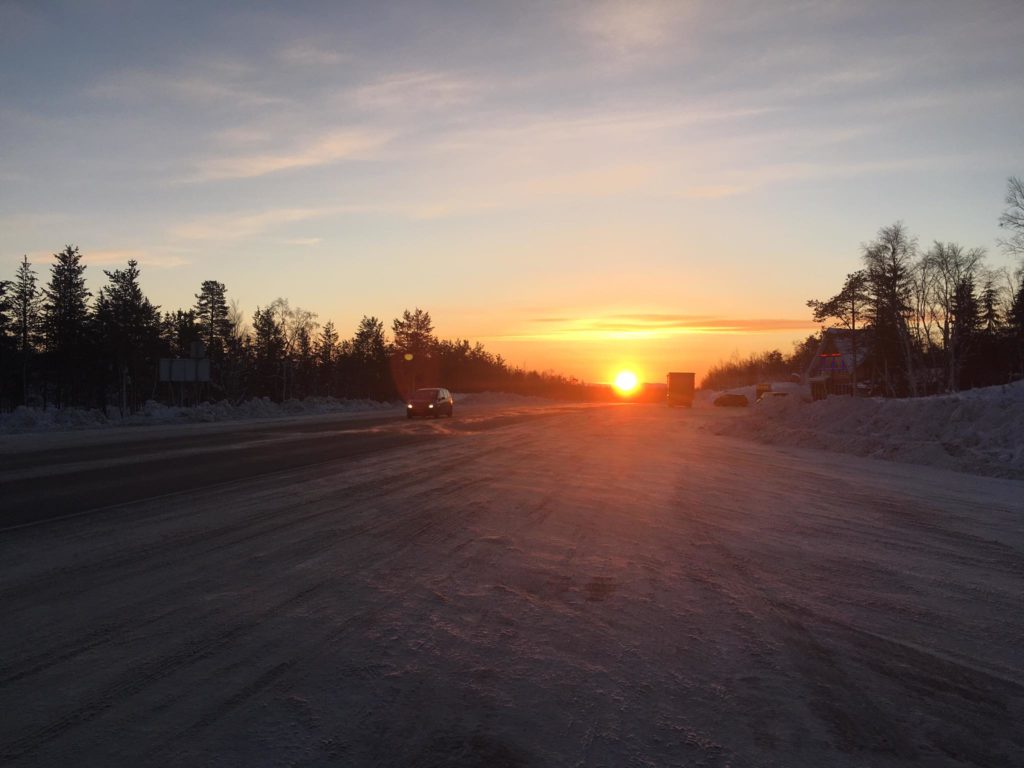
And this time we really liked the town, despite the fact that most of it consists of panel five-storey buildings (Khrushchev buildings, as they are called in by Russians). I don't know what I enjoyed most: the snow-white slopes of the mountains with quite a decent and modern ski resort, the relaxed way of life here and the absence of traffic jams, or maybe I just forgot the feeling of crystal clear snow crunching in the cold season when you walk along it… In any case, we all liked those two nights and one day that we spent in Kirovsk.
Liinahamari is a small village on the border, which had been serving as a submarine base for some decades long ago. It is located on the shore of the Pechenga Bay and overlooks the Barents Sea. This is the edge of the world. There are only a little more than 20 km to the border with Norway, 150 km to Murmansk and 2200 km to Moscow.

This time we were lucky with the weather. Just yesterday a storm was raging here, and today everything is "peace and quiet" and the sea is calm. A dense fog is soaring over the water, hiding the opposite rocky shore. It's frosty. The air temperature is –14°C, the temperature of water is +3°C, so in still weather the sea is covered with a haze, through which you can distinguish the contours of half-submerged ships, a destroyed wooden pier and an undone submarine hull, which was pulled ashore. Four or five submarines and several small ships were sunk in the bay of Liinahamari in the last century. Now they are being taken out and dismantled for scrap.
At 10 a.m., when the sun had not risen yet, we went to the sea, where a small vessel, specially equipped for diving, was already waiting for us. A snow-covered pier, an icy wheelhouse, a mast and an iron deck of the ship in combination with the dark scope of the bay on the background didn't look like the most cheerful and optimistic landscape, especially for those who had got used to spending their holidays on the beaches of Egypt or the Maldives. ;)
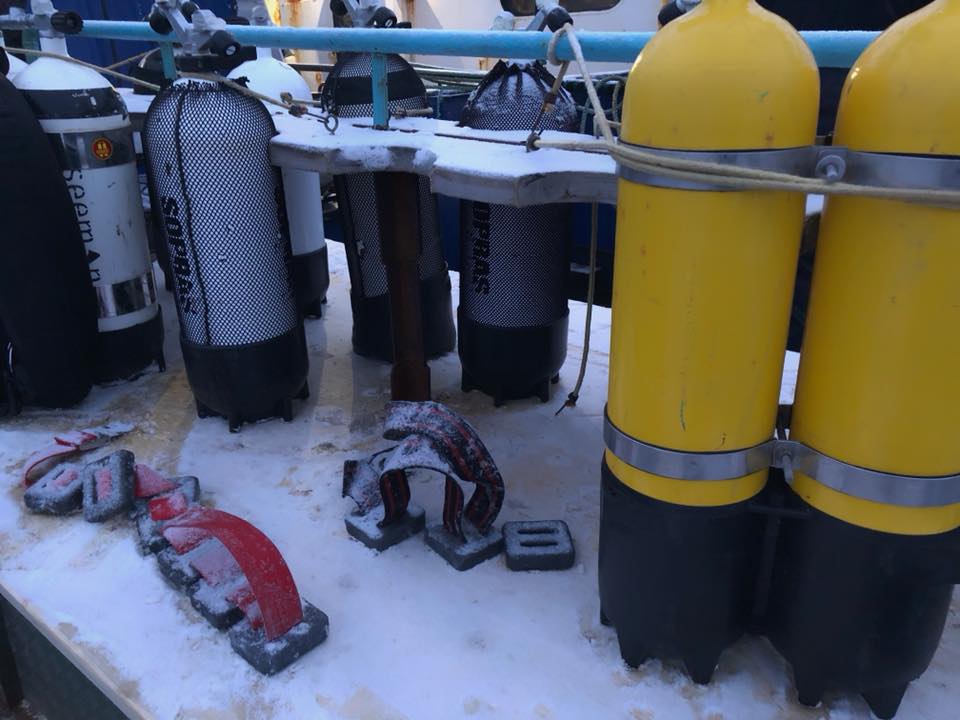
We went down into the hull and there, in a spacious and warm cabin, we got prepared for the dive: checked the equipment, put on warm overalls and dry suits. Everything must be carefully checked and adjusted, since it will be much more difficult to do these things under the water.
Winter dives differ from summer ones in terms of difficulty. In winter you can be challenged by things starting from ordinary movement along the icy deck and ending with problems with equipment. The frozen second stages of regulators and inflator valves, stiff slings and other peculiarities bring a certain flavour to the diving process. And a reward for this challenge is the unforgettable experience of what you see above and below the water. There are steep rocky walls with soft corals — anemones, bizarre kelp algae, which go into the abyss and in the thickets of which huge crabs are waiting for prey. They were moving their claws (the size of a human hand) slowly and became our prey, without expecting it at all. The sandbanks are dotted with scallops. Exactly for these delicacies we had overcome thousands of kilometers almost to the edge of the world. And they were great!
- This is our team
Our journey to the north of Russia has come to an end. We have left Murmansk with its big ships sleeping at the berths in a foggy haze, Monchegorsk with its smoking pipes of the mining and processing plant, Apatity and Kandalaksha behind. We have also passed by a turn to a small village of a military unit, which had a fabulous name "Lapland" (apparently, servicemen have a good sense of humor too), and a "Polar Circle" stella.

The snow-covered highway E-105 leads us to the south, where there is little snow, but a lot of cars, fuss and dirt on the roads, where we will be returned to the usual course of life with its daily problems and obligations, where days fly by as quickly as the numbers on the odometer of our car are changing now.
Having stayed overnight in a wonderful log house, which provided all the amenities, on the outskirts of Medvezhyegorsk, we headed for Vologda the following morning.
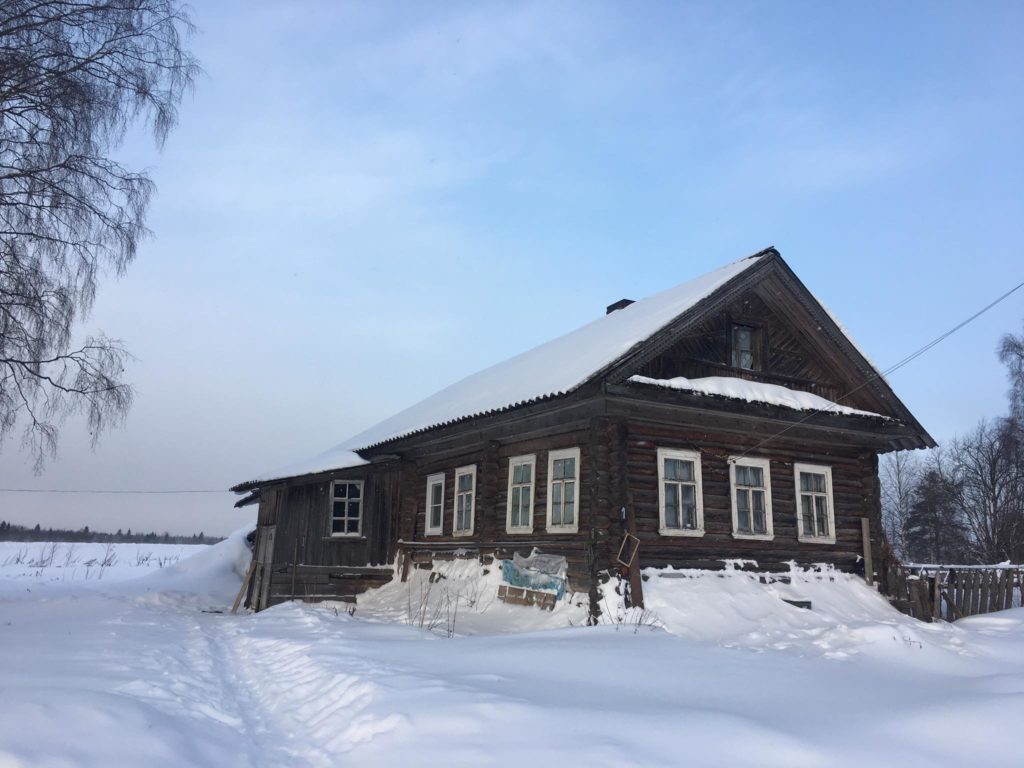
The almost perfect highway, which has been renovated lately and now shows minimal traffic, is laid across the snow-covered Karelian taiga area, winds along numerous rivers and lakes, and crosses the famous White Sea–Baltic Canal with its unique gateway system. From time to time we're meeting huge logging trucks on the oncoming lane, which leave a snow hurricane behind them.
Povenets, Pudozh, Vytegra are small Karelian towns and settlements with narrow streets and old wooden houses, which are decorated with carved architraves and cornices. Sometimes we were coming across semi-abandoned villages on our way. They consist of several grey log houses, embedded in the ground, with decrepit fences and outbuildings nearby. People had left this area and that's why life here froze. Only swamps and endless dense forests have stretched for hundreds of kilometers. This is Russia…
A few hours later we saw the sun for the first time on our trip. The huge orange ball rose slowly right in front of us. What a beauty!
 Cap-travel.ru
Cap-travel.ru